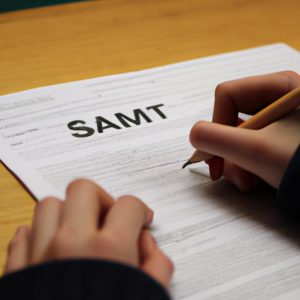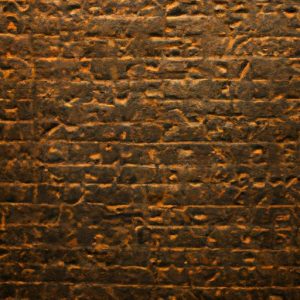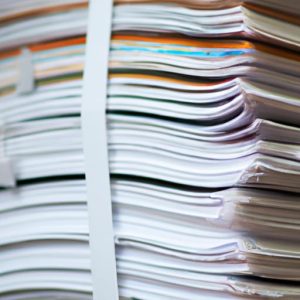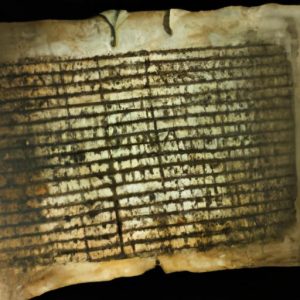In our fast-paced digital world, where typing has become the norm, the art of handwriting seems to have taken a backseat. However, there is a certain elegance and charm to writing in cursive that cannot be replicated by typing. But is there more to cursive writing than just aesthetics? Have you ever wondered if writing in cursive is faster than other forms of writing? Let’s dive into the world of cursive writing and explore whether it holds a speed advantage over other writing styles.
A. Overview of Cursive Writing
Cursive writing, also known as script or longhand, is a style of handwriting where the letters are connected, flowing from one to another. It is a skill that was once taught in schools as a fundamental part of education. Cursive writing is characterized by its smooth, continuous strokes, creating a more fluid and graceful appearance compared to print writing.
B. Importance of Writing Speed in Today’s Digital Age
In our modern era, where efficiency is highly valued, writing speed plays a crucial role. Whether it’s taking lecture notes, jotting down important information, or simply expressing our thoughts on paper, the speed at which we can write directly impacts our productivity. With the rise of digital devices, the ability to write quickly and legibly has become even more vital, as we strive to keep up with the pace of our fast-paced lives.
C. Introduction to the Main Question: Is Writing in Cursive Faster?
Now, let’s address the burning question: is writing in cursive faster than other writing styles? Many proponents of cursive writing argue that its connected nature allows for faster writing, as the pen glides effortlessly across the paper. On the other hand, some believe that print writing, with its individual and separate letters, may offer a speed advantage. It’s time to delve deeper into the factors that influence writing speed and uncover the truth behind the speed advantage, if any, of writing in cursive.
Stay tuned as we explore the intricate details of cursive writing, examine the factors affecting writing speed, and compare cursive and print writing speeds. Together, we will unravel the mysteries surrounding the speed of cursive writing and discover whether it truly holds an advantage. Get ready to embark on this intriguing journey into the world of handwriting!
Understanding Cursive Writing
A. Definition and Characteristics of Cursive Writing
Cursive writing is a form of handwriting that involves joining letters together in a flowing manner. Unlike print writing, where each letter is written separately, cursive writing creates a continuous and connected script. This style of writing is characterized by its loops, curves, and slanted letters. The fluidity of cursive writing allows for a more efficient writing process, as the pen glides smoothly across the page, reducing the need to lift it after each letter.
B. History and Evolution of Cursive Writing
The origins of cursive writing can be traced back to ancient civilizations, such as the Egyptians and Romans, who developed scripts that incorporated connected letters. Over the centuries, cursive writing evolved and took various forms in different cultures. During the Renaissance period, for instance, the Italic script emerged as a popular cursive style in Europe.
In the United States, cursive writing gained prominence in the 18th century as a standard form of handwriting taught in schools. It remained an essential skill throughout the 19th and 20th centuries. However, with the rise of digital technology and the introduction of keyboard-based communication, the emphasis on cursive writing has diminished in recent years.
C. Benefits and Drawbacks of Cursive Writing
Cursive writing offers several benefits beyond its aesthetic appeal. The connected nature of cursive allows for faster writing, as the writer can maintain a continuous flow without the interruption of lifting the pen. Moreover, studies have suggested that cursive writing may improve cognitive skills, such as memory retention and motor coordination.
On the other hand, cursive writing has its drawbacks. Some individuals find it challenging to read or write in cursive due to its unique letterforms and variations. Additionally, the decline in the teaching of cursive in schools has led to a generation of individuals who struggle to read historical documents or handwritten notes in cursive.
Understanding the definition, historical significance, and pros and cons of cursive writing will provide us with a solid foundation as we explore the speed aspect further. Now that we have a grasp of the fundamentals, let’s delve deeper into the factors that influence writing speed in cursive versus other writing styles.
Factors Affecting Writing Speed
Writing speed is influenced by various factors that can either hinder or enhance our ability to write quickly and efficiently. Let’s explore the key factors that contribute to the speed of handwriting.
A. Motor Skills and Muscle Memory
Our motor skills and muscle memory play a significant role in determining our writing speed. The muscles in our fingers, hand, and wrist must work harmoniously to control the pen or pencil effectively. Those with well-developed motor skills tend to have an advantage in writing speed, as their movements are more precise and fluid. Developing fine motor skills through activities such as finger exercises and writing drills can improve writing speed over time.
B. Familiarity and Proficiency with Cursive Writing
Just like any other skill, the more familiar and proficient we are with cursive writing, the faster we can write. With practice, our hand becomes accustomed to the flow and movement required for cursive writing, allowing us to write with greater speed and ease. Those who have invested time and effort into mastering cursive writing often find themselves at an advantage when it comes to writing speed.
C. Hand-Eye Coordination and Penmanship Techniques
Hand-eye coordination is crucial for achieving optimal writing speed. The ability to accurately guide the pen along the paper relies on the coordination between our hand movements and visual perception. Additionally, employing effective penmanship techniques, such as maintaining consistent letter size and spacing, can contribute to faster writing. By honing our hand-eye coordination and adopting efficient penmanship techniques, we can enhance our writing speed significantly.
D. Individual Writing Style and Personal Preferences
Each individual has a unique writing style and personal preferences when it comes to handwriting. Some may naturally write with more speed, while others may find a slower pace more comfortable. Factors such as the size and slant of one’s handwriting, as well as personal preferences regarding pen grip and writing utensils, can impact writing speed. It is important to find a writing style and penmanship approach that suits you best to achieve optimal speed and legibility.
By understanding and considering these factors, we can gain insights into the elements that influence our writing speed. In the next section, we will delve into a comparative analysis of cursive and print writing speeds to shed light on the speed advantage, if any, of writing in cursive.
Comparing Cursive and Print Writing Speeds
A. Research Studies and Experiments on Writing Speed
To determine whether cursive writing is indeed faster than print, numerous research studies and experiments have been conducted. These studies aim to provide empirical evidence and shed light on the speed disparities between the two writing styles. Researchers have examined various aspects, such as the time taken to complete writing tasks, the number of words written per minute, and the overall efficiency of cursive and print writing.
B. Analysis of Writing Speed in Cursive vs. Print
The results of these studies have yielded interesting insights into the speed differences between cursive and print writing. While there is no definitive consensus, some findings suggest that cursive writing can be faster in certain scenarios. The connected nature of cursive allows for smoother pen movement and fewer interruptions between letters, potentially increasing writing speed. However, it is important to note that individual proficiency and comfort with each style can significantly impact writing speed as well.
C. Factors Influencing the Speed Difference between Cursive and Print
Several factors come into play when considering the speed difference between cursive and print writing. Firstly, motor skills and muscle memory play a crucial role. Individuals who have mastered cursive writing and developed muscle memory for the letter formations may find it faster and more efficient than print. Additionally, familiarity and proficiency with cursive writing techniques can contribute to increased speed.
Moreover, hand-eye coordination and penmanship techniques also influence writing speed. The ability to smoothly transition between letters and maintain a consistent rhythm can impact overall speed. Furthermore, each person’s unique writing style and personal preferences may affect their speed in cursive versus print. Some individuals may naturally find cursive faster due to their handwriting habits, while others may find print more efficient.
As we move forward, we will explore practical considerations for writing in cursive and provide tips to improve writing speed. By understanding the factors that influence the speed difference between cursive and print, we can better evaluate which style suits our needs and preferences. Let’s uncover more insights on this fascinating topic!
Practical Considerations for Writing in Cursive
A. Learning and Practicing Cursive Writing Techniques
Mastering cursive writing requires patience and practice. To improve your cursive writing skills, consider the following techniques:
-
Start with the basics: Begin by familiarizing yourself with the cursive alphabet and letter formations. Practice writing each letter individually until you feel comfortable with their shapes and connections.
-
Consistency is key: Maintain a consistent slant and letter size throughout your writing. This will not only enhance the legibility of your cursive writing but also contribute to a more uniform and visually appealing script.
-
Practice stroke order: Pay attention to the order in which strokes are made for each letter. Proper stroke order ensures smoother transitions between letters and ultimately leads to faster writing.
B. Advantages and Disadvantages of Writing in Cursive
Like any writing style, cursive has its own set of advantages and disadvantages. Let’s take a closer look:
-
Advantages of cursive writing:
- Speed: With its continuous flow, cursive writing can potentially be faster than print writing, especially when you become proficient in it.
- Aesthetics: Cursive writing is often regarded as more elegant and sophisticated, lending a touch of personal style to your correspondence.
- Cognitive benefits: Studies suggest that learning and practicing cursive writing can enhance fine motor skills, hand-eye coordination, and overall cognitive development.
-
Disadvantages of cursive writing:
- Legibility: Cursive writing can be challenging to read if not executed properly or if the writer’s style is too unique or elaborate.
- Learning curve: Learning cursive requires time and effort, especially for those who have primarily used print writing throughout their lives.
- Limited usage: In today’s digital age, where typing dominates, opportunities to showcase cursive writing may be limited, potentially reducing its practicality.
C. Tips to Improve Writing Speed in Cursive
If you’re looking to increase your writing speed in cursive, consider these helpful tips:
-
Relax your grip: A tight grip can hinder your writing speed. Hold the pen or pencil with a relaxed grip, allowing the movements to flow more naturally.
-
Practice with speed drills: Set aside dedicated practice sessions where you focus on writing quickly. Start with basic letter formations and gradually increase the complexity as you build confidence.
-
Utilize shortcuts: Identify ways to simplify certain letter formations or connections without compromising legibility. Experiment with different techniques to find what works best for you.
By incorporating these strategies into your cursive writing practice, you can enhance your speed and efficiency while maintaining the beauty and elegance that cursive offers. Let’s move forward and explore the intriguing world of cursive writing speed!
Conclusion
After a thorough examination of the speed advantage of writing in cursive, we can draw some insightful conclusions. Although cursive writing may appear to offer a faster writing experience due to its continuous flow, numerous factors come into play when determining writing speed.
It is crucial to acknowledge that writing speed is a subjective matter influenced by individual factors such as motor skills, familiarity with cursive writing, hand-eye coordination, and personal writing style. While some individuals may find cursive writing faster and more efficient, others may prefer print or even a hybrid style that combines both.
Moreover, the significance of writing speed in today’s digital age cannot be denied. However, the emphasis on speed should not overshadow the importance of legibility and clarity. Ultimately, the choice of writing style should be based on an individual’s comfort, proficiency, and the task at hand.
As we bid farewell to this exploration of cursive writing speed, let us remember that the beauty of handwriting lies not only in its speed but also in its ability to convey emotions, personality, and creativity. Whether you choose to embrace the elegance of cursive writing or opt for other forms of writing, the most crucial aspect is to find joy and express yourself through the written word.
So, the next time you pick up a pen, remember that the speed of your writing is just one aspect of the rich tapestry that is your handwriting. Embrace your unique style, experiment with different techniques, and let the words flow effortlessly from your pen. Happy writing, and may your journey be filled with both speed and grace!





